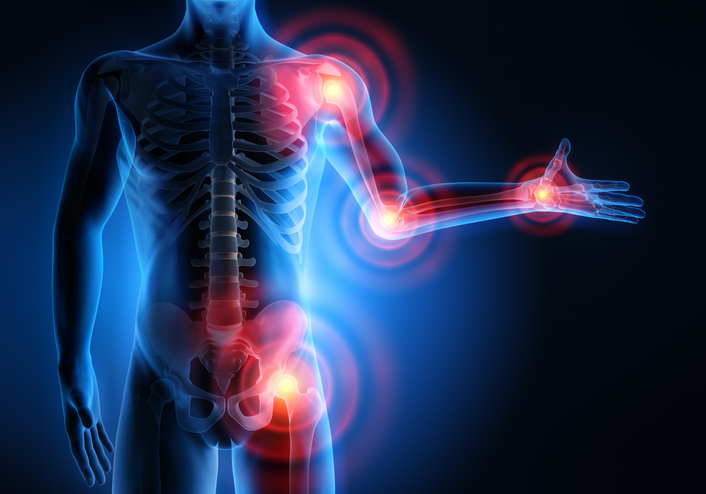
Here are the top stories recently covered by DocWire News in the rheumatology section. In this edition, read about a rituximab biosimilar, switching from nonsteroidal anti-inflammatory drugs (NSAIDs) to cognitive behavioral therapy in knee osteoarthritis (OA), disparities in socioeconomic protective benefit for obesity in knee OA, and sleep disturbances and anxiety/depression in psoriatic arthritis (PsA).
A rituximab biosimilar provided rheumatoid arthritis (RA) patients similar safety and efficacy outcomes compared to the reference drug in a study. According to the study authors, “ABP 798 is a proposed biosimilar to the originator biologic rituximab, an anti-CD20 monoclonal antibody.” The study enrolled 311 RA patients (282 completed the full study). The mean decrease in Disease Activity Score 28-joint C-reactive protein from baseline between the ABP 798 and pooled rituximab groups (−2.197 vs. −2.125, respectively) achieved clinical equivalence; all three groups achieved similar mean decreases up to 48 weeks. The proportion of patients in each group who achieved American College of Rheumatology (ACR) core set improvements of at least 20%, 50%, and 70% through week 48 was also similar, and mean hybrid ACR scores were similar among the groups.
Patients with knee OA may be able to switch from NSAID therapy to meloxicam or cognitive behavioral therapy without significant differences in pain after about three months, according to a randomized withdrawal trial. Final analysis included 180 patients (mean [SD] age, 58.2 [11.8] years; 161 were male) randomized to the placebo then cognitive behavioral therapy group and 184 patients (mean [SD] age, 58.5 [10.0] years; 154 were male) randomized to receive meloxicam. After four weeks, when adjusting for baseline pain and study site, the estimated between-group mean difference in Western Ontario and McMaster Universities Osteoarthritis Index pain score after four weeks was 1.4; after 14 weeks, however, the difference was no longer as significant Also at 14 weeks, the groups did not significantly differ in the global impression of change or lower extremity disability.
Socioeconomic status may be less protective against obesity for black patients with knee OA compared to white patients, a study found. A correlation was observed between higher income and a decreased likelihood of being overweight/obese. Race and income had a statistically significant relationship with overweight/obesity; however, income had a smaller protective effect for black patients compared to white patients with knee OA. Upon race-stratified regression models, the researchers observed an inverse relationship between income and overweight/obesity in white patients, but this was not observed in black patients.
A recent study analyzed the prevalence of and factors associated with sleep disturbances, fatigue, and anxiety/depression among PsA patients. Reporting in Arthritis Research & Therapy, the authors assessed 137 PsA outpatient clinic patients in Norway. More than a third of patients reported sleep disturbances (38.0%) and anxiety/depression (38.0%); 44.5% reported fatigue. Univariate analysis observed a significant relationship between sleep disturbance and female gender, higher body mass index, smoking, not currently working, 68 tender joint count (TJC68), Maastricht Ankylosing Spondylitis Enthesitis Score (MASES) score, pain, fatigue, anxiety/depression, higher modified Health Assessment Questionnaire (mHAQ), and less exercising. Factors associated with fatigue included female gender, not being employed/working, TJC68, MASES score, pain, sleep disturbances, anxiety/depression, and mHAQ. A correlation was observed between anxiety/depression and smoking, mHAQ, not currently working, pain, fatigue, and sleep disturbances.







 © 2025 Mashup Media, LLC, a Formedics Property. All Rights Reserved.
© 2025 Mashup Media, LLC, a Formedics Property. All Rights Reserved.